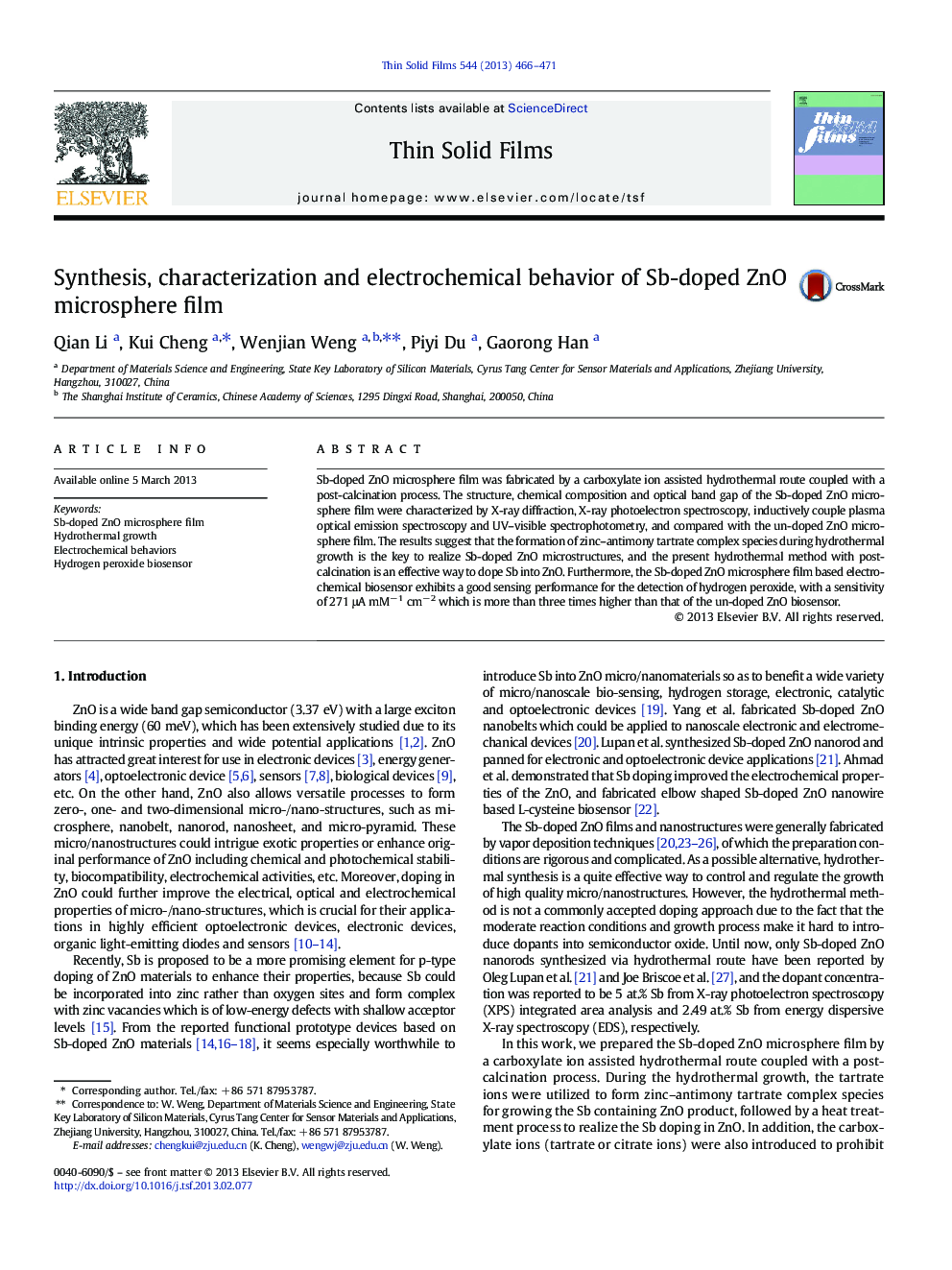| Article ID | Journal | Published Year | Pages | File Type |
|---|---|---|---|---|
| 1666030 | Thin Solid Films | 2013 | 6 Pages |
•Sb-doped ZnO microsphere (SZM) films were grown by hydrothermal deposition.•Carboxylate ions were used to form complex during hydrothermal growth.•The formation of Zn–Sb tartrate complex is the key to realize SZM.•The biosensors based on SZM film are feasible and sensitive to detect H2O2.•The Sb doping could improve the electrochemical property of ZnO.
Sb-doped ZnO microsphere film was fabricated by a carboxylate ion assisted hydrothermal route coupled with a post-calcination process. The structure, chemical composition and optical band gap of the Sb-doped ZnO microsphere film were characterized by X-ray diffraction, X-ray photoelectron spectroscopy, inductively couple plasma optical emission spectroscopy and UV–visible spectrophotometry, and compared with the un-doped ZnO microsphere film. The results suggest that the formation of zinc–antimony tartrate complex species during hydrothermal growth is the key to realize Sb-doped ZnO microstructures, and the present hydrothermal method with post-calcination is an effective way to dope Sb into ZnO. Furthermore, the Sb-doped ZnO microsphere film based electrochemical biosensor exhibits a good sensing performance for the detection of hydrogen peroxide, with a sensitivity of 271 μA mM− 1 cm− 2 which is more than three times higher than that of the un-doped ZnO biosensor.
